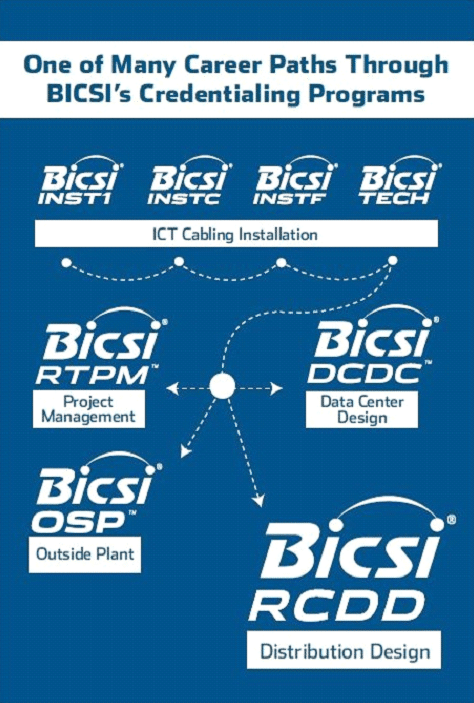Network cabling and connectivity are more critical to organizational success than ever before. In the past, if a connection did not function properly, a single user might be down, but in today’s digital business landscape, connectivity continues to be at the forefront of successful companies. If one Wi-Fi access point or server has a bad connection, tens, hundreds, even thousands of users can be impacted. Here we will share the critical checklist of network infrastructure low-voltage cabling and how you can be sure to protect your company, saving costs and improving efficiency.
Here, we will provide you with a critical checklist for low-voltage cabling in network infrastructure, explaining how you can ensure your company's protection, save costs, and improve efficiency.
BICSI Telecommunications Cabling Standards
Would you allow an uncertified electrician into your home or business to run new electrical connections? Of course not, then why do so many treat their physical cabling infrastructure any less? The culprit is likely that faulty, low-voltage cabling does not cause fires or harm employees if designed and installed incorrectly, though it will cause other issues. BICSI cabling standards are the guidelines every installation and company must follow to avoid performance issues and unforeseen problems.
Network Cabling Design
A proper network cabling design starts with a quality, BICSI standard-centered design and a structured data cabling installation. To accomplish this, you need a Registered Communications Distribution Designer (RCDD) certified engineer. There are a number of certifications that can be gained through BICSI (see below), but the one that matters for your company is RCDD certification with the knowledge, skill, and foresight to deploy data communications technology systems and infrastructures as you need them to be.
V-Soft infrastructure provides structured cabling design and implementation services and builds tailored enterprise cabling solutions that ensure business network security and meet organizational unique IT infrastructure needs.

Wi-Fi Wireless Survey & Cabling Networks
Wireless networks are available in almost all businesses, organizations, and public spaces we come across nowadays. Unlike the old days, wireless networks are no longer just placed wherever but are strategically located for coverage and security to ensure the best return on investment.

Possible Innovation with Network Cabling Design
Most understand that enterprise network cabling supports phones, wireless, and computers, but the truth is your network cabling infrastructure can be much more meaningful. During times of pandemic, for example, trying to be a ‘green’ company, or simply protecting your employees and assets, organized network cabling design can innovate your organization’s IT infrastructure maintenance.
Power Over Ethernet (PoE) Lighting
Consider PoE lighting. In the simplest of terms, PoE lighting refers to the ability to use an Ethernet cable to power light fixtures. It’s easy to implement and will not only provide cost savings for your business with lowered electricity costs, but it can provide a list of long-term benefits as well.
- Access to advanced analytics through a centralized dashboard
- Improved employee productivity with preferred temperature lighting settings
- Automated lighting with occupancy sensors and advanced scheduling options
- The ability to utilize more natural light with daylight harvesting.
Thermal Imaging Cameras for Business
Thermal imaging cameras for your business are beneficial and integrated easily into your current infrastructure. In pandemic times, it can help protect the health and safety of employees by sensing increased temperatures of people entering the building. By detecting and measuring heat emitted from objects, otherwise known as infrared radiation, elevated temps can be automatically sent to a database for the proper officials to review and make quick decisions on how to react, providing an extra layer of business network security and protection to those within space.
Conclusion
V-Soft Consulting is a reliable infrastructure company providing enterprise cabling solutions, network cabling design, energy-efficient network solutions, data cabling installation services, etc. To design a customized IT environment that is ideal for your company, we deeply understand your unique goals, difficulties, and IT preferences. We, being a leading enterprise cabling solutions provider, create a secure network cabling infrastructure that connects your systems and devices to a network and helps you reduce the risk of network downtime, enhance data accessibility or transfer, and boost productivity.














